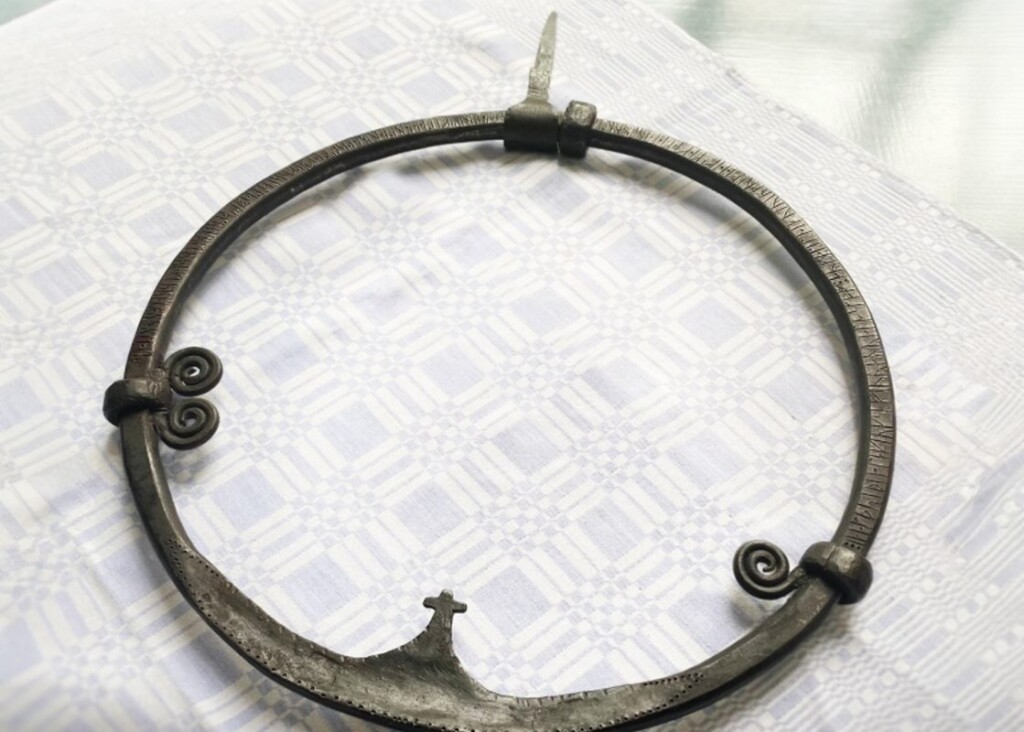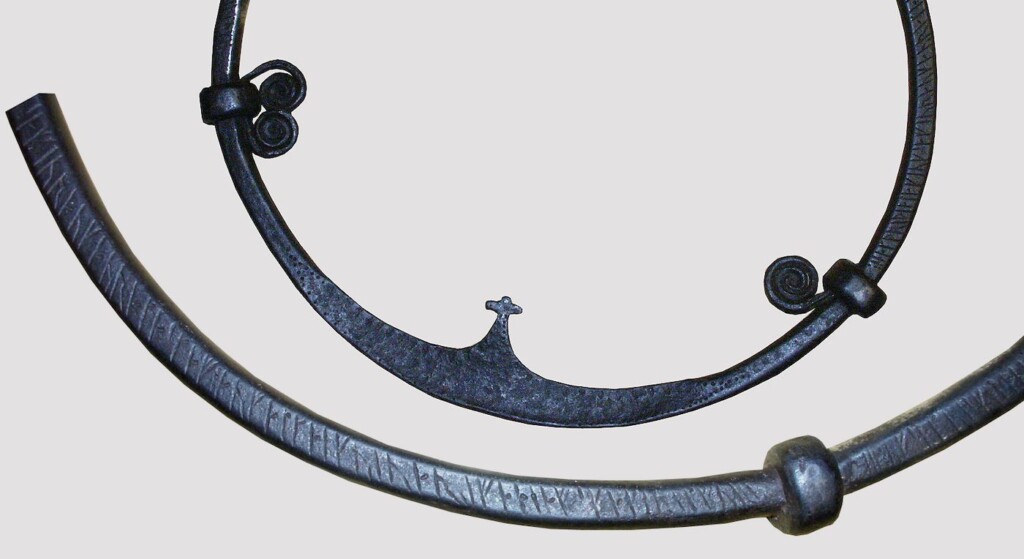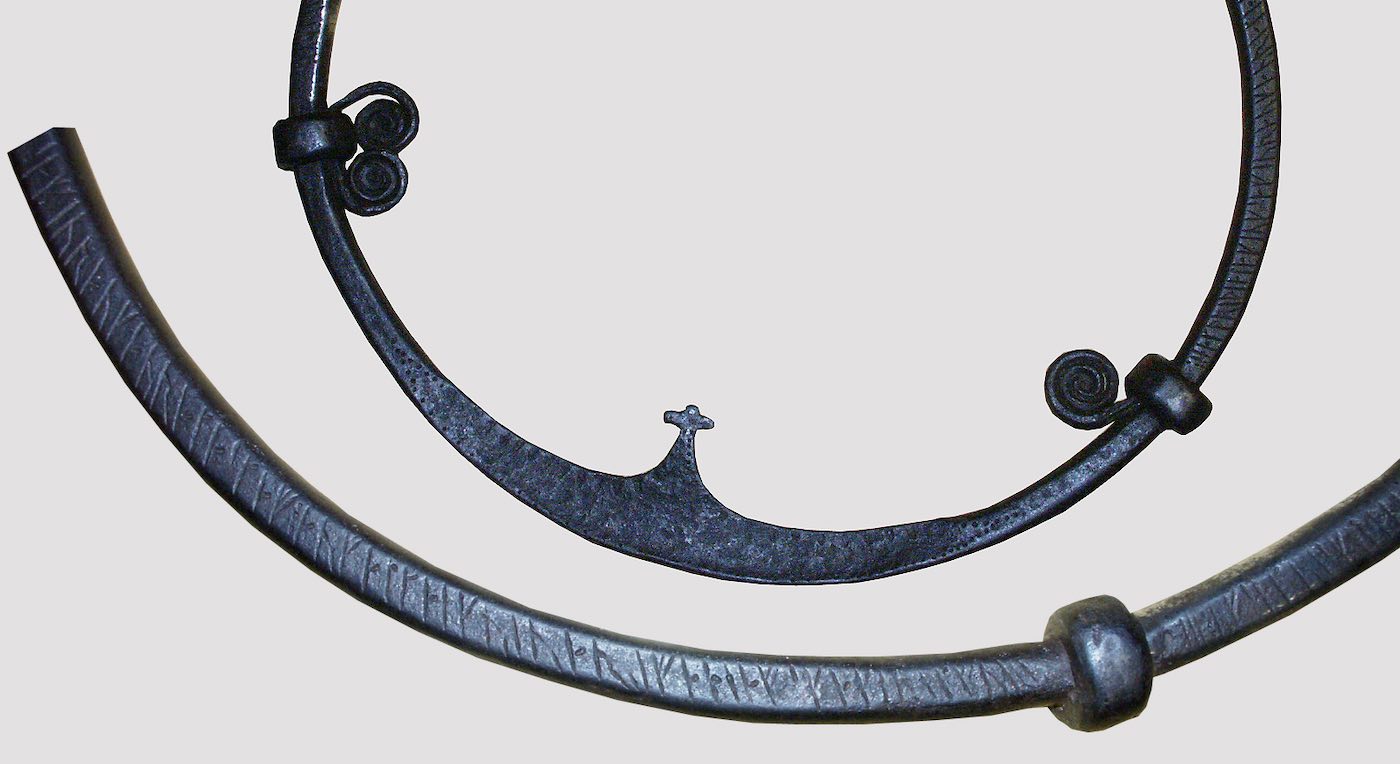
A recent reinterpretation of the oldest extant Viking legal text in Scandinavia has shed light on the surprising societal sophistication of these raiders and traders.
The text is from an iron ring found in Sweden dating to the 9th century, called the Varsa Ring
Though an undoubtedly strange place to post civic information about fines, the runic inscription emblazoned on an iron door handle was once believed to read that fines had to be paid with an ox and two öre of silver, or “uksa … auk aura tua.”
But auk has multiple meanings, one of which is “also” and Professor of Economic History at Stockholm University, Rodney Edvinsson, believes this means that fines could be paid with an ox, or two öre of silver.
Along with being a reminder that the fine print in legal speak, whether medieval or modern, should always be read carefully, the inscription’s new meaning captures the depth of societal cohesion that the often isolated and disparate communities of Scandinavia maintained, even as their members were constantly sailing off to raid or settle in other lands.
“This indicates a much more flexible system, where both oxen and silver could be used as units of payment. If a person had easier access to oxen than to silver, they could pay their fines with an ox. Conversely, if someone had silver but no oxen, they could pay with two öre of silver,” Professor Edvinsson told his university press.
A Northman who spent the majority of his time going abroad on the trade routes, or to plunder England, France, the Low Countries, or the Baltic states would find it far easier to get his hands on two öre of silver than on ox, considering his unstable lifestyle.
Indeed, tens of thousands of silver coins from all over Europe have been found at Viking trading settlements like Birka and Gotland, where, along with honestly obtained goods, those stolen from royal or monastic settlements in Europe, or from other Scandinavian kings and jarls who would certainly be wanting to recover them, could be fenced.

However, for a sedentary Scandinavian who fished or farmed, two öre of silver would be a significant quantity of money, representing months of labor, and could therefore be avoided by the payment of an oxen.
“The valuation of an ox at two öre, or 50 grams of silver, in 10th-century Sweden resembles contemporary valuations in other parts of Europe, indicating a high degree of integration and exchange between different economies,” says Rodney Edvinsson. One öre was likely equivalent to about nine Arabic dirhams, a currency that circulated in large quantities among the Vikings.
The Icelandic family sagas written in the 13th century by the legendary Norse writer Snorri Sturlsson constantly narrative scenes involving the Norse law codes that capture how these simple yet honored legal customs could resolve disputes across all the disparate Scandinavian proto-states, city-states, and communes separated even as they were by mountains, ocean, and ice.
MUST-READ STORIES ABOUT THE HISTORY OF THE VIKINGS:
- Archeologists Confirm Oldest Viking Ship Burial in All Scandinavia–Could Rewrite the Viking Age
- 4 Years After Discovery, the First Viking Ship Burial Found in Over 100 Years Reveals its Lost Secrets
- Viking Age Shipyard Uncovered at Birka is Like Nothing Ever Found Before
- ‘Sensational’ Runestone Discovered in Norway With Mysterious Inscription–May Be World’s Oldest
- While Excavating 1000-Year-old Viking Ship, Norwegians Find Remnants of Elite Society
Women had a panoply of rights above and beyond what most women in Europe at the time enjoyed. Men who committed property crimes were forced to pay for the property they took or destroyed with an equivalent from their own stock. If they couldn’t pay or refused to, the ‘Thing,’ or jury, may declare that the criminal lost legal protections on a certain amount of his property. This often led to a culture of bounty hunting, but could nevertheless quickly resolve property disputes if the criminal went to sea to try and escape justice.
Repeated criminal offenses could lead to all the man’s property being forfeited to the community, or even of the man himself being declared an exile, at which point even his murder was permitted by law—though this was rarely done if the case did not itself involve murder.
This simple recourse to community-established norms predated both the Magna Carta and therefore English Common Law, and indeed is one of the foundational legal systems of modern Europe. It served to satisfy community members’ needs for legal recourse and mediation, and could be quickly adapted to suit any community of Norsemen whether far afield or right at home.
The price mechanisms for fines fit perfectly into this paradigm of ensuring that fair compensation for anti-social behavior could be obtained reasonably quickly regardless of which profession the lawbreaker practiced.
SHARE This Must-Have Insight Into The Viking Age With Your Friends Who Love VIKINGS…




















